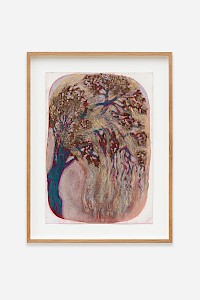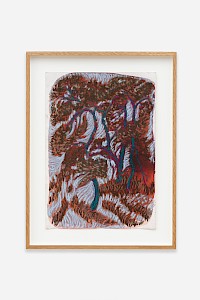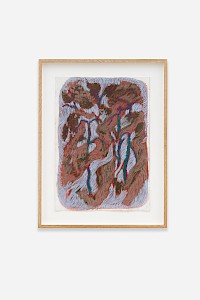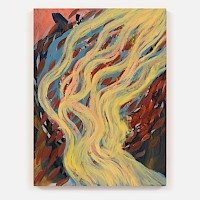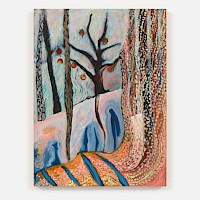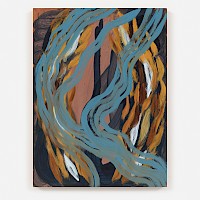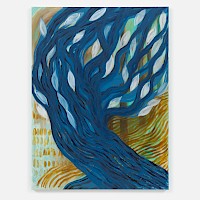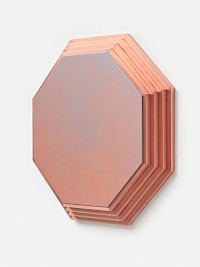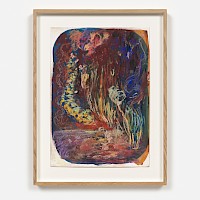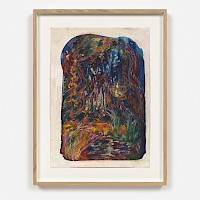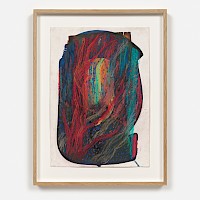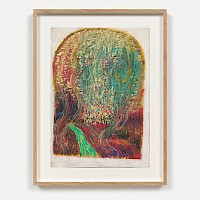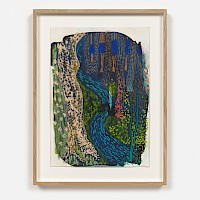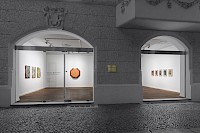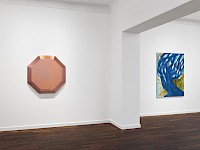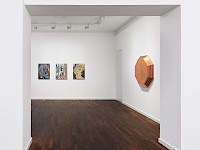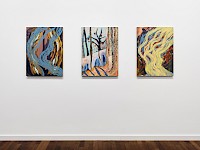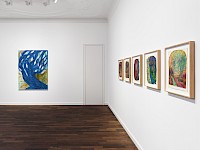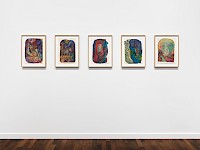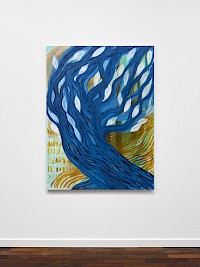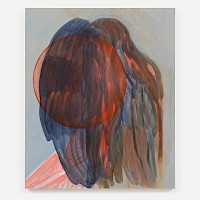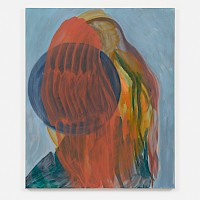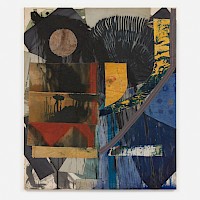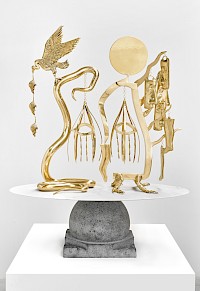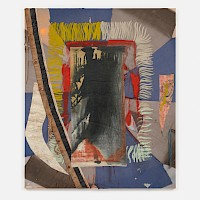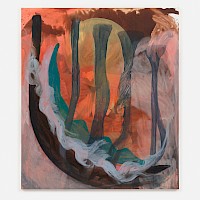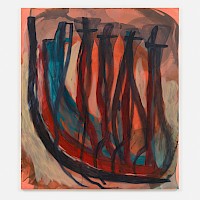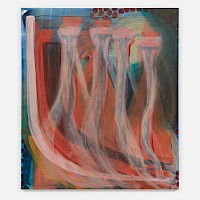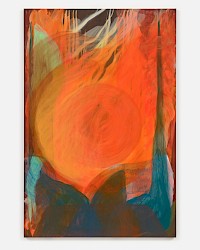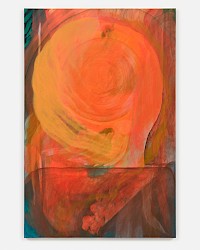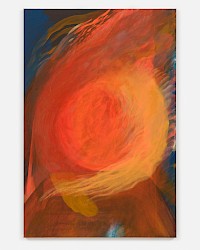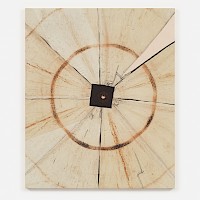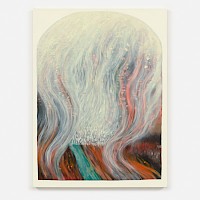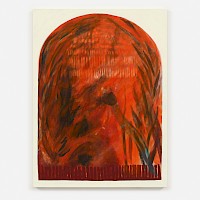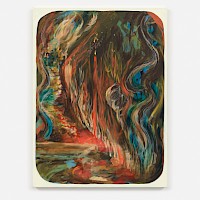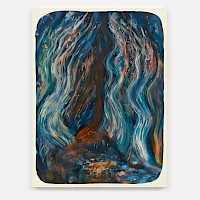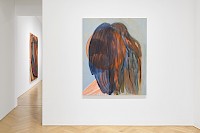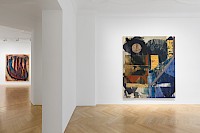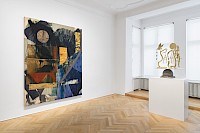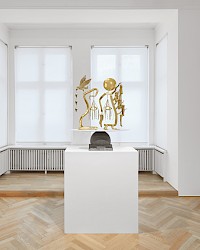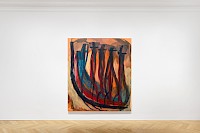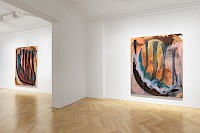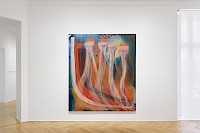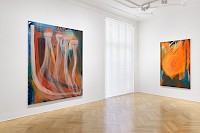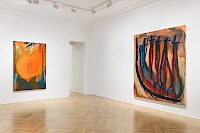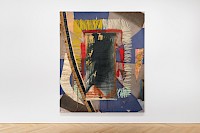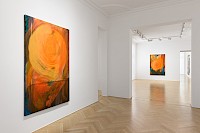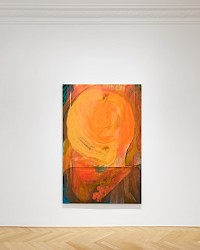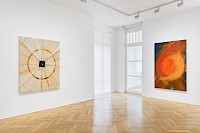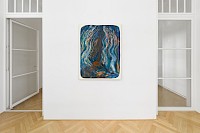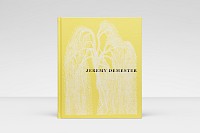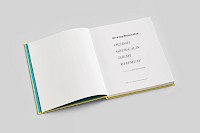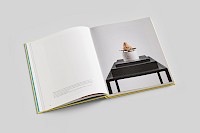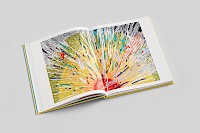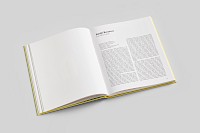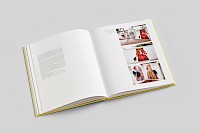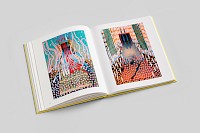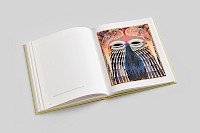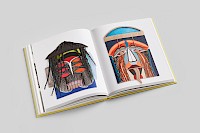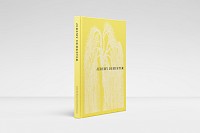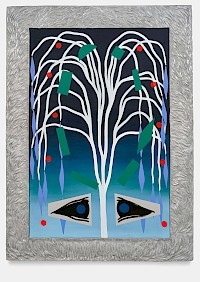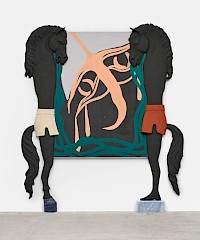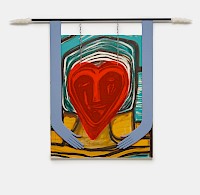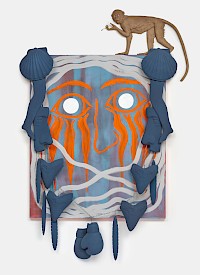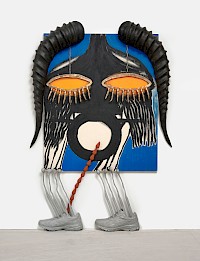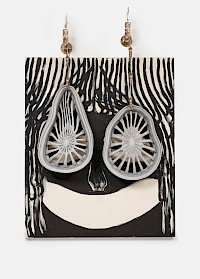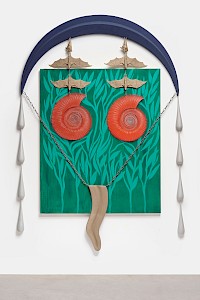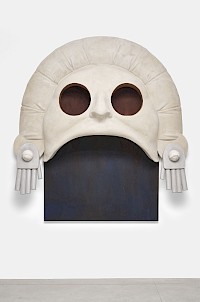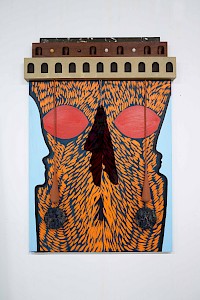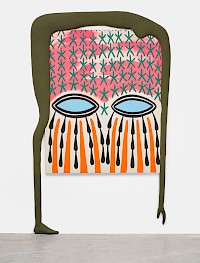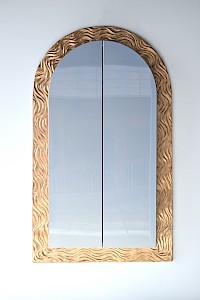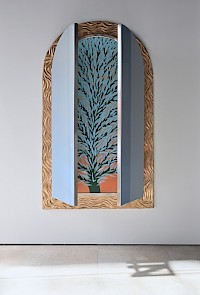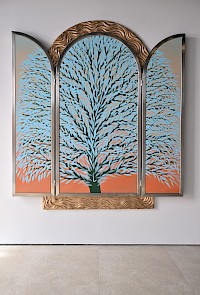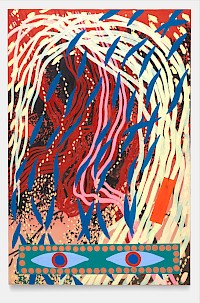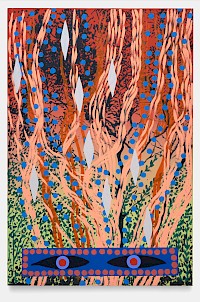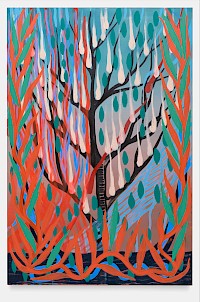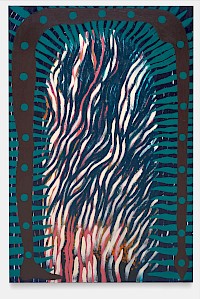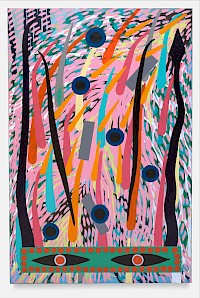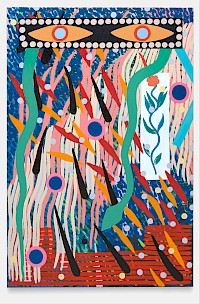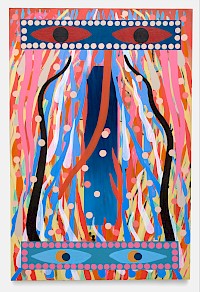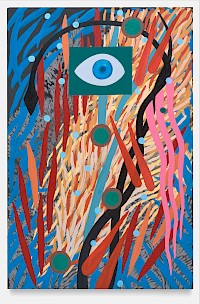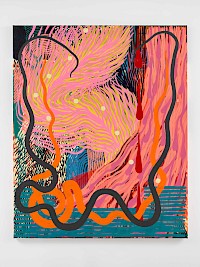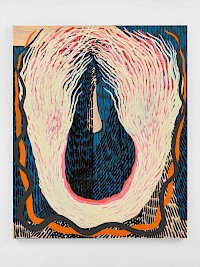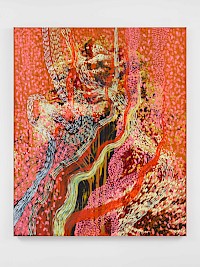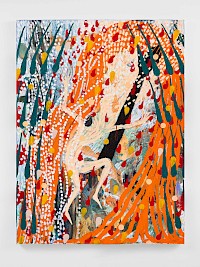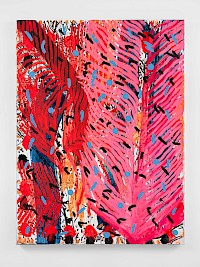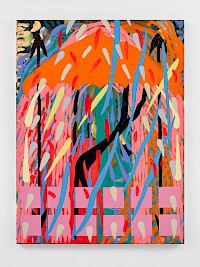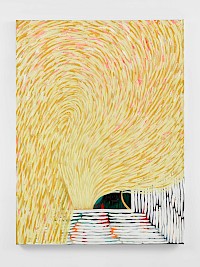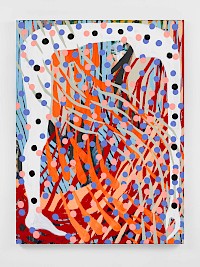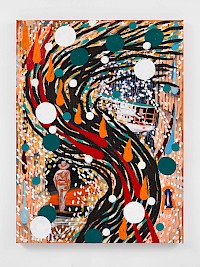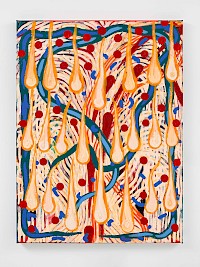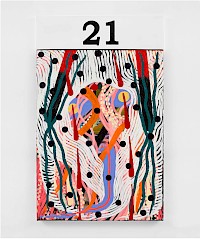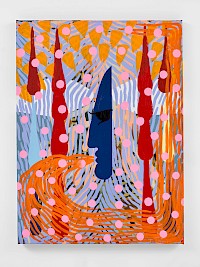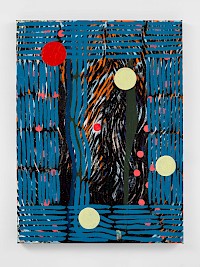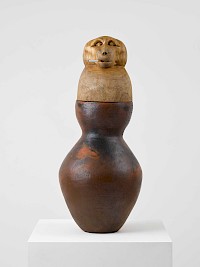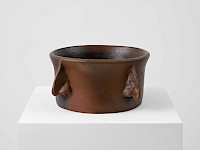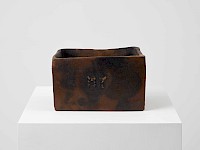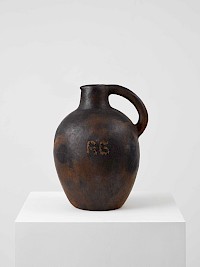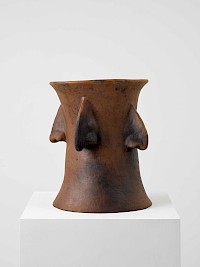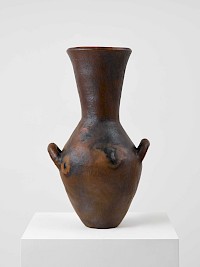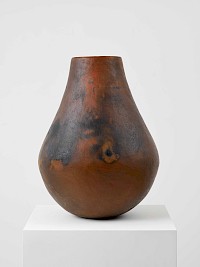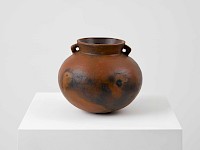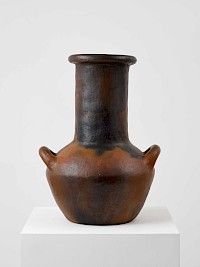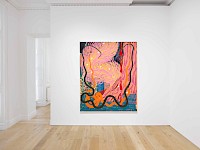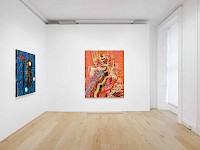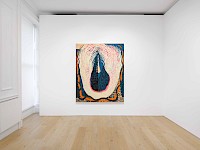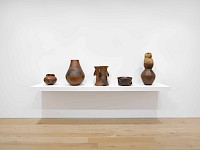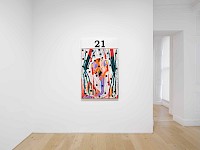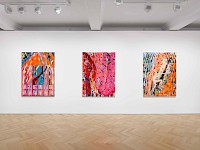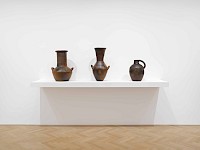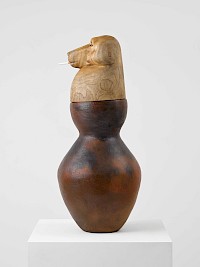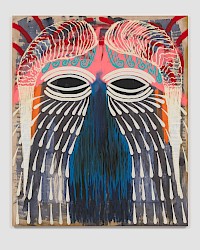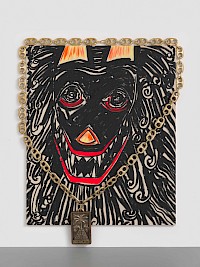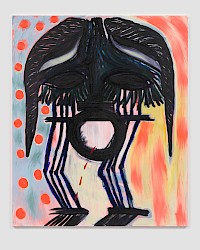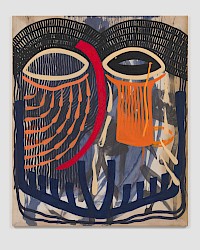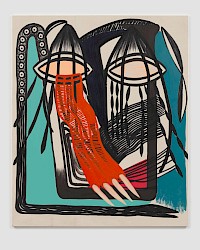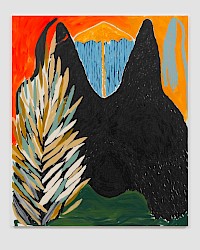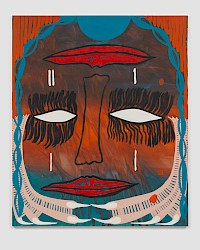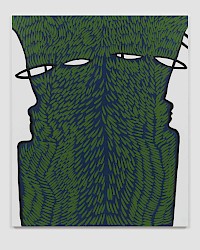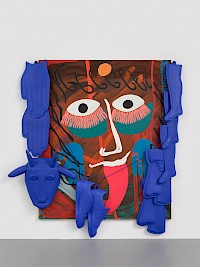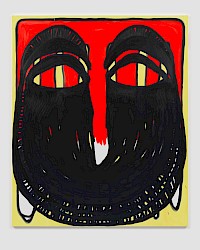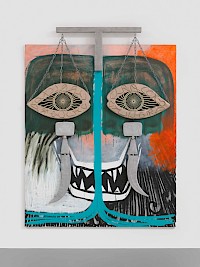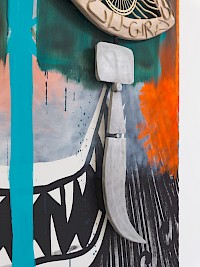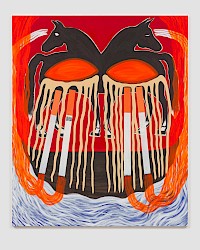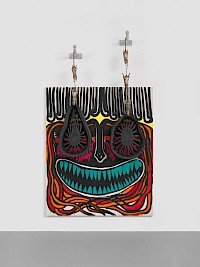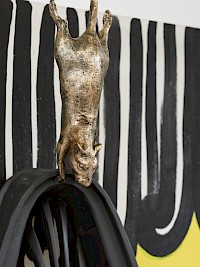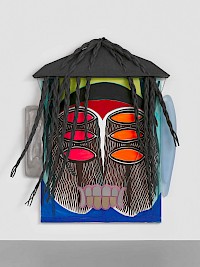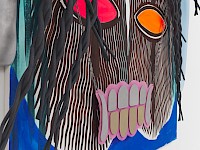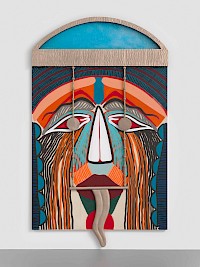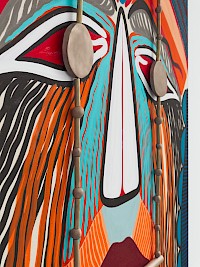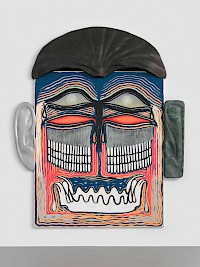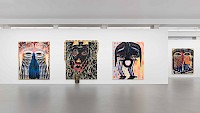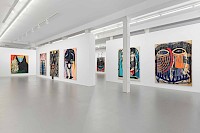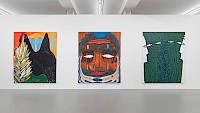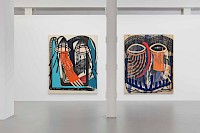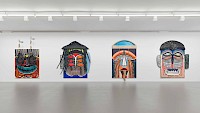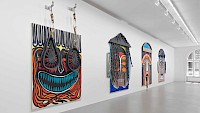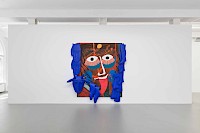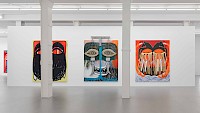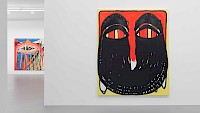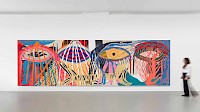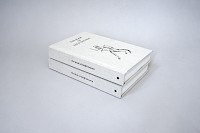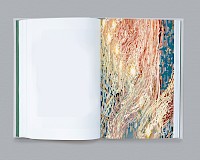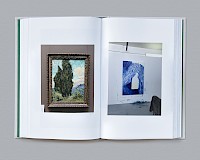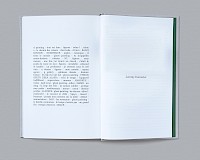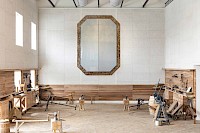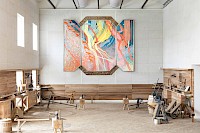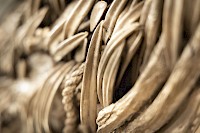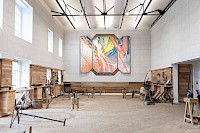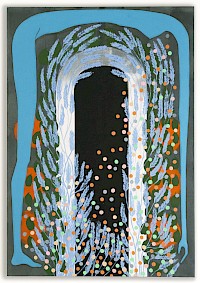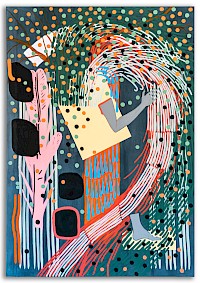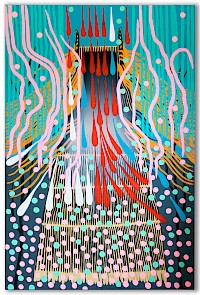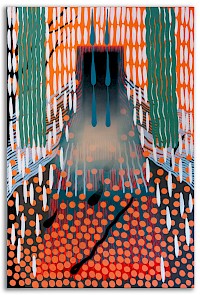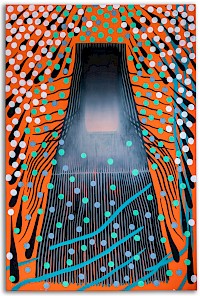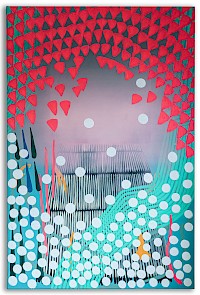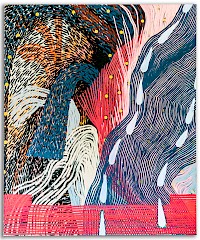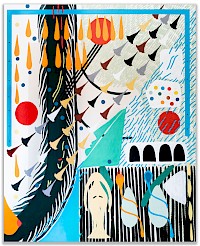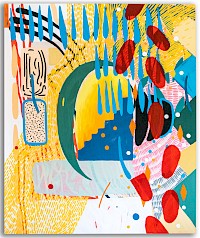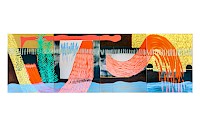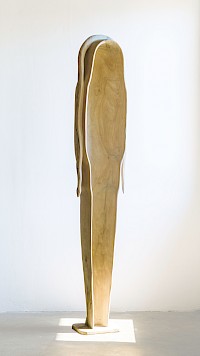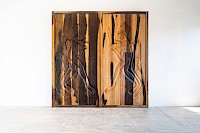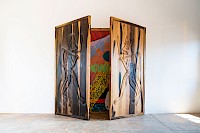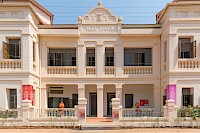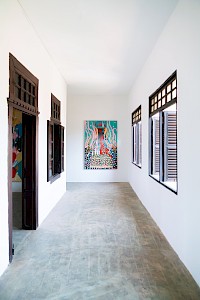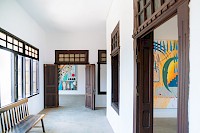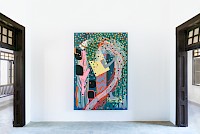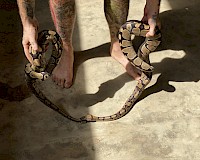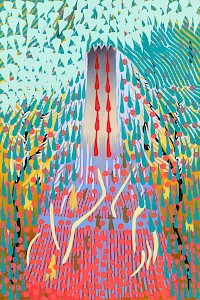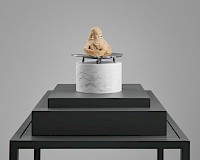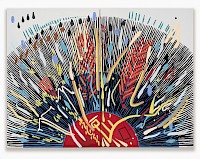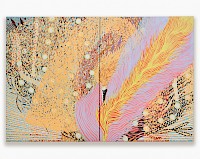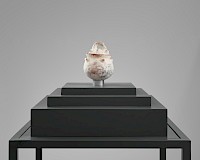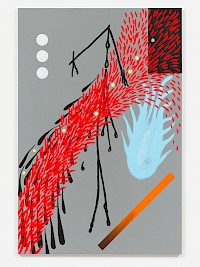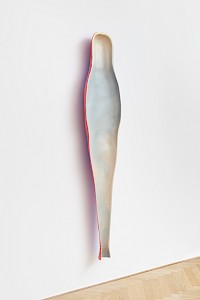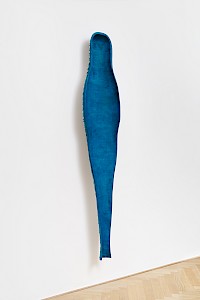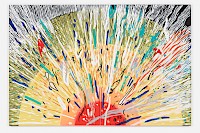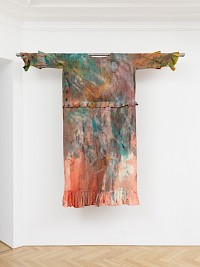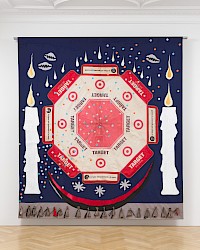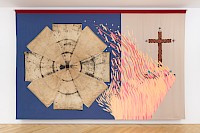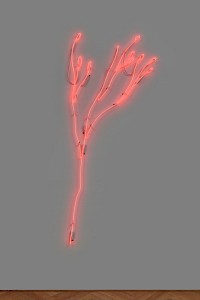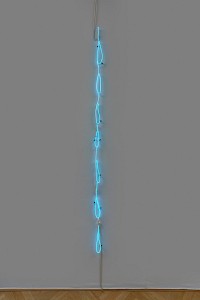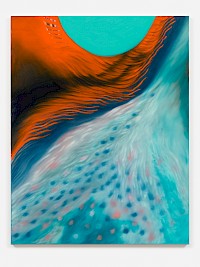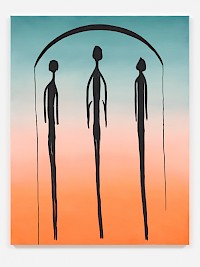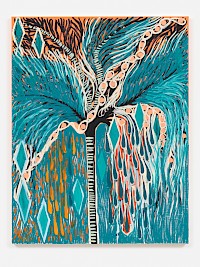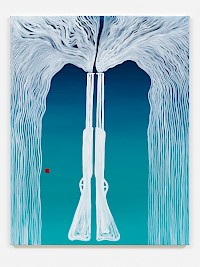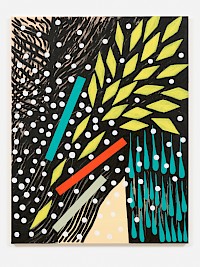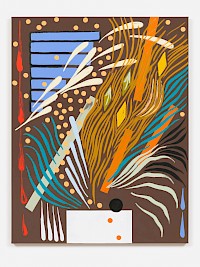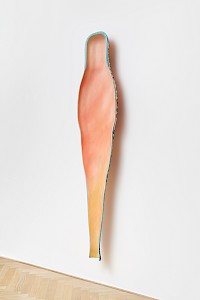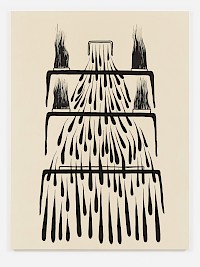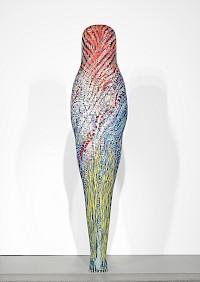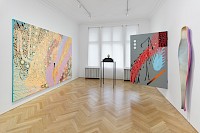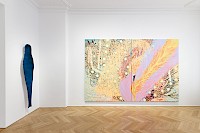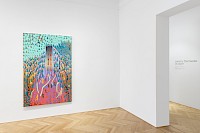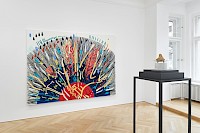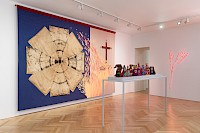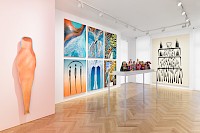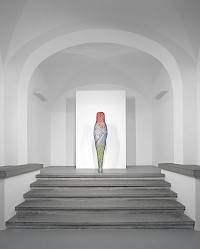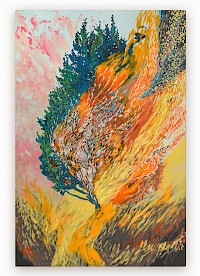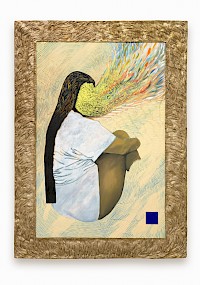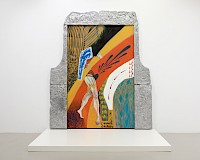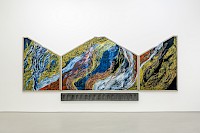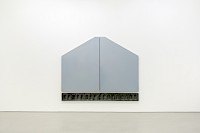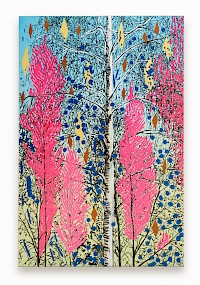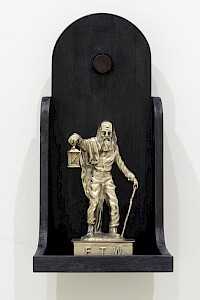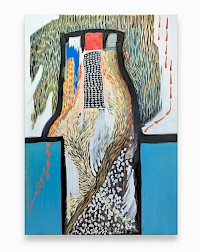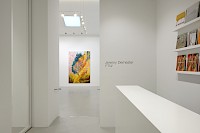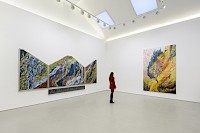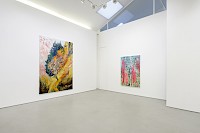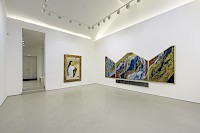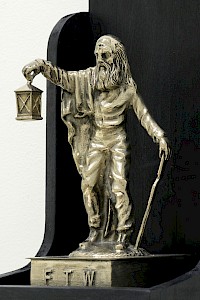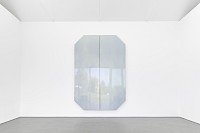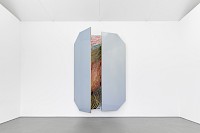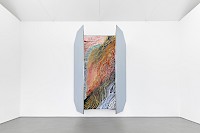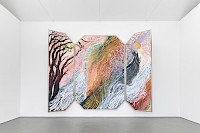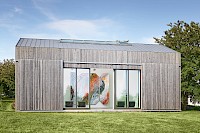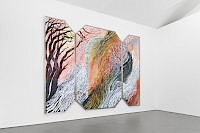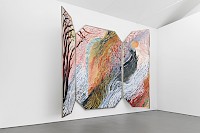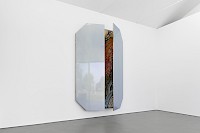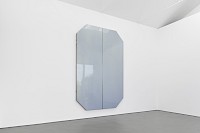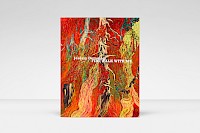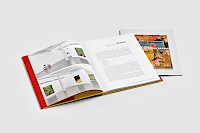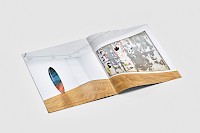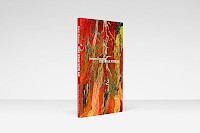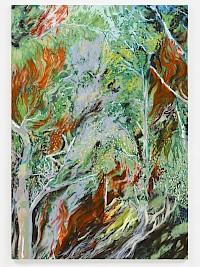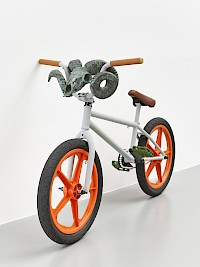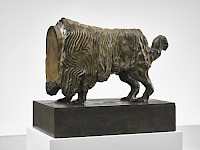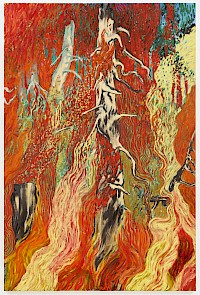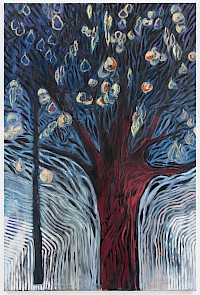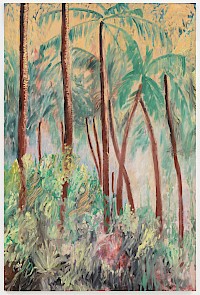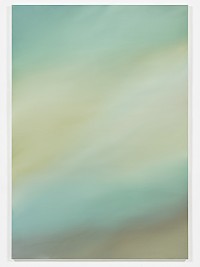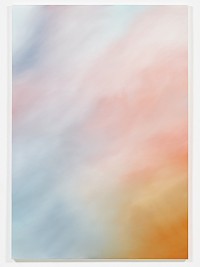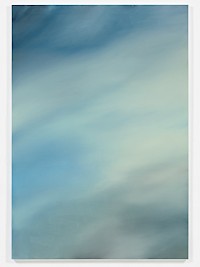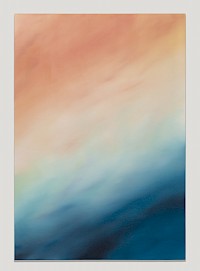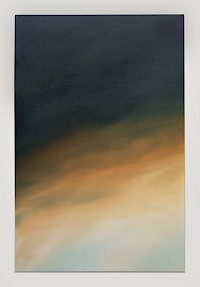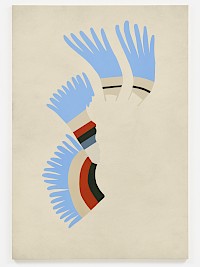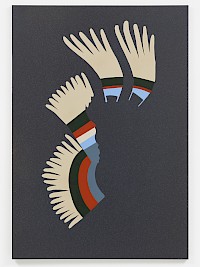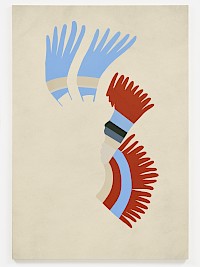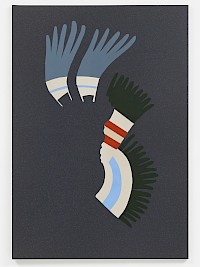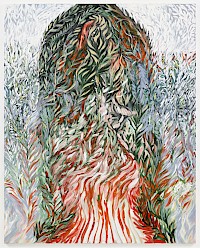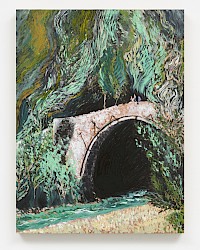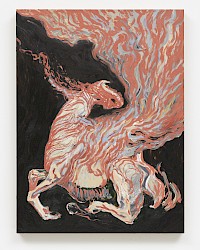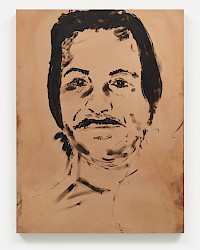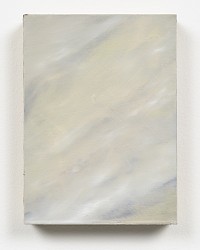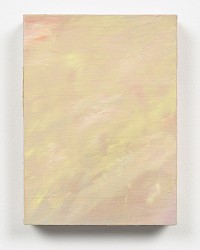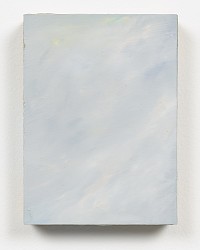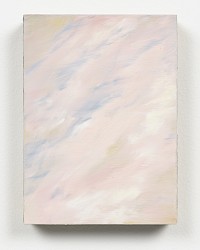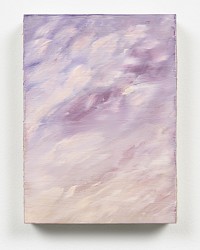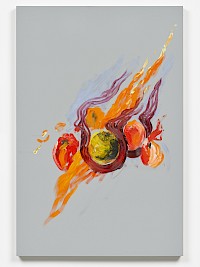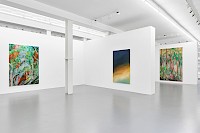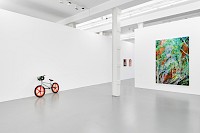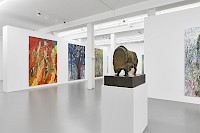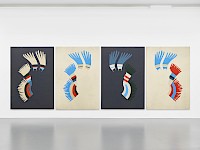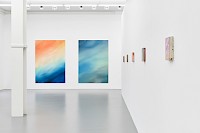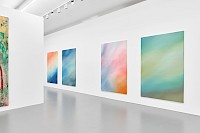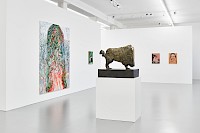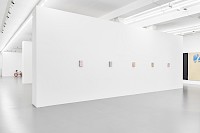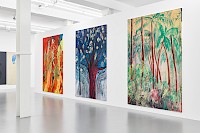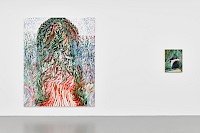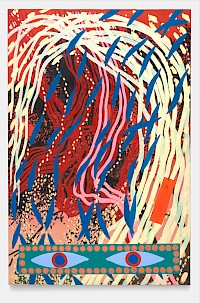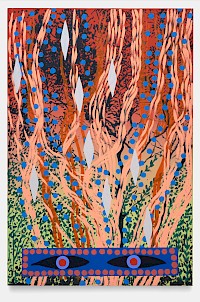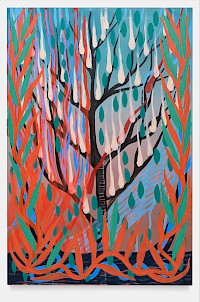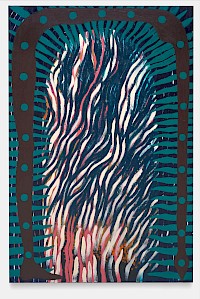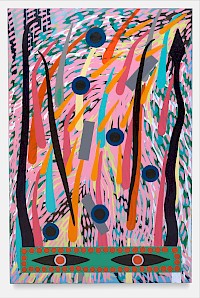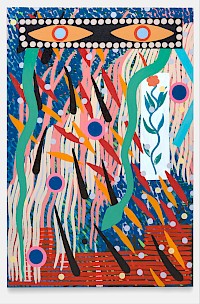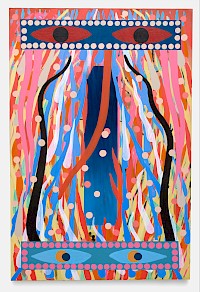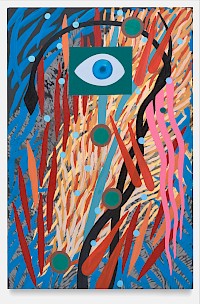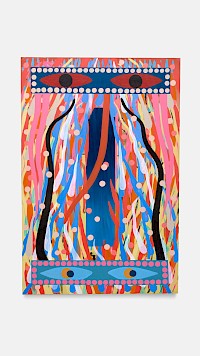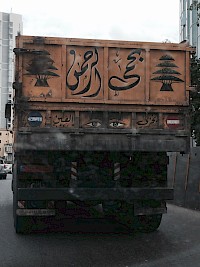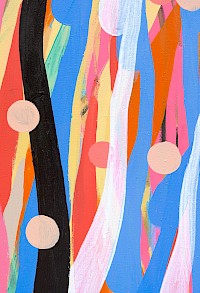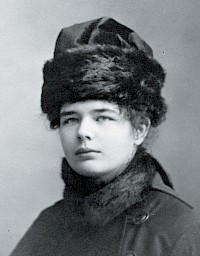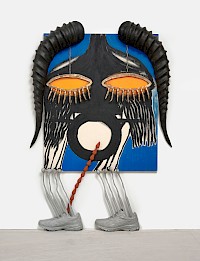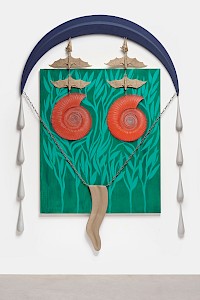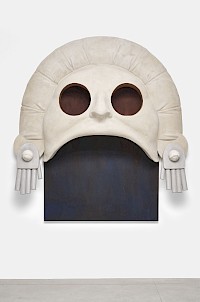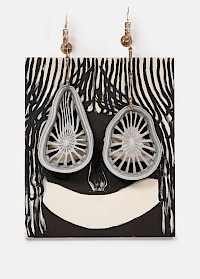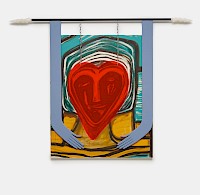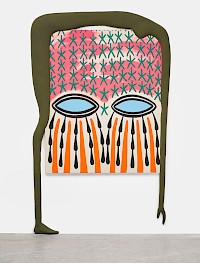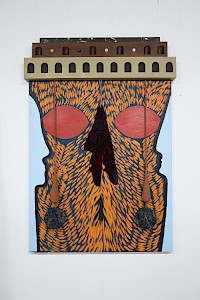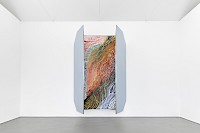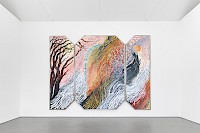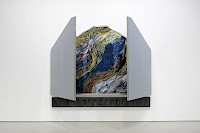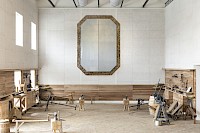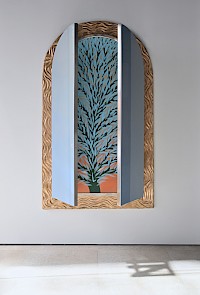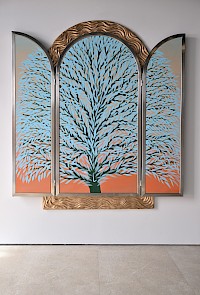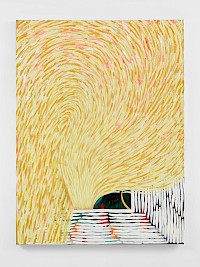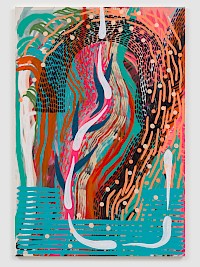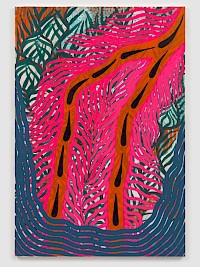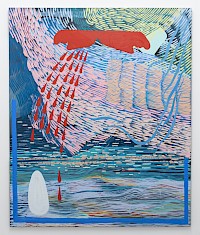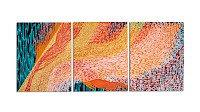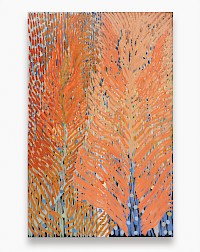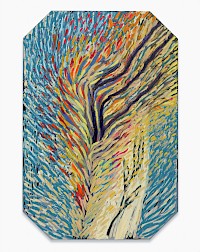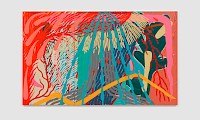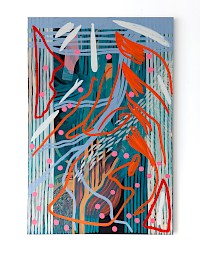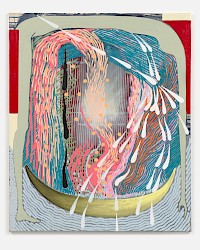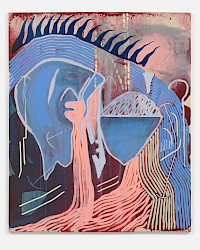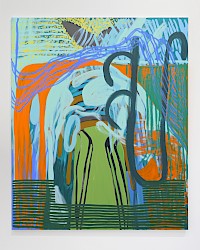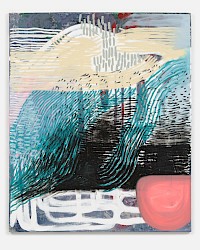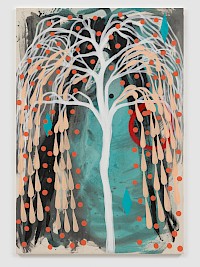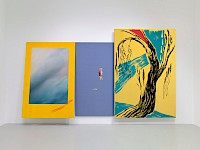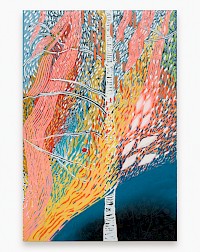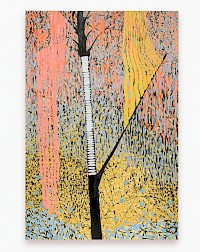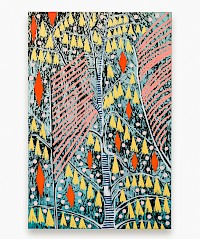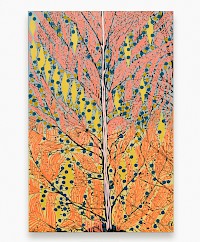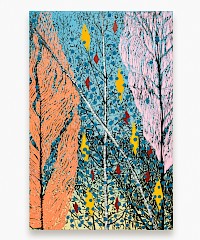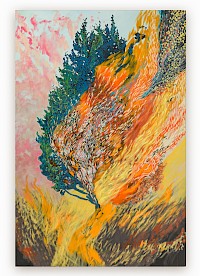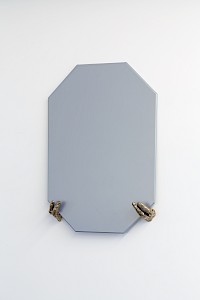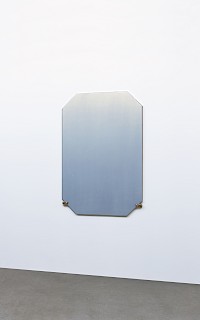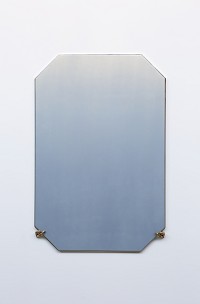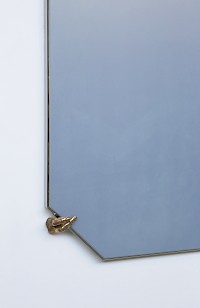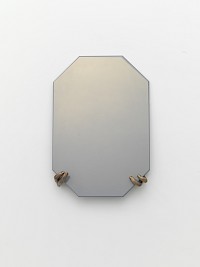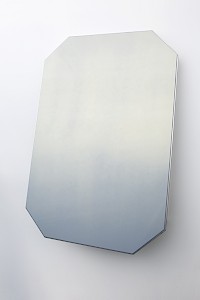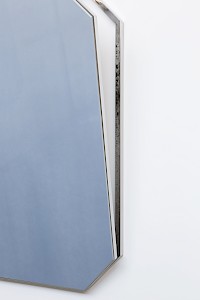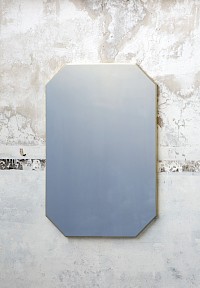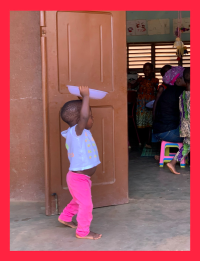Le temps, la matière et le geste : L’Ombre des heures, Le Retable du temps de Jeremy Demester
« Entre force et douceur, la main trouve, et l’esprit répond. »
— Tchouang-tseu
Nos existences sont gouvernées par le passage cyclique du temps. Les années, les mois et les jours composent des cycles et des rythmes, auxquels chaque personne et chaque communauté peuvent donner du sens. Ce rythme du temps, ces cycles répétés, introduisent dans nos vies des ralentissements et des accélérations, nous indiquent des joies à venir ou nous remémorent des souvenirs passés, mettent en mouvement nos émotions comme dans une danse. Au XIVe siècle, les artistes flamands inventent un objet qui matérialise ce mouvement du temps : le retable à trois volets. Installé derrière l’autel d’une église, ou plus rarement dans un réfectoire, le retable est fermé la plus grande partie de l’année et donne à voir, chaque jour, une scène simple et austère en lien avec les cultes locaux. Mais quand arrivent les quelques fêtes importantes de l’année liturgique, l’habitant du village voisin ou le pèlerin qui vient de traverser de sombres forêts, tous deux peu coutumiers du luxe, se voient révéler la composition vivement colorée et parée d’or du retable grand ouvert, déployée largement sur les trois volets. L’effet de surnaturel est puissant. Ouvrir le retable, c’est dévoiler quelque chose qui se cache au cœur du temps long.
L’Ombre des heures, Le Retable du temps, n’est pas une œuvre religieuse, mais le quatrième retable à trois volets peint par Jeremy Demester pour un lieu spécifique et sa communauté. Installé en 2021, il occupe le mur du fond de l’atelier de tonnellerie de la Maison Hennessy, à Cognac. Les artisans qui passent désormais leurs journées en compagnie de cette œuvre ne se préoccupent pas des rythmes du culte chrétien ni du souvenir de temps immémoriaux, mais bien de considérations pratiques : la cadence de leur travail et la transmission de leur savoir- faire. « L’artiste est celui à qui il revient, à partir de nombreuses choses, d’en faire une seule et, à partir de la moindre partie d’une seule chose, de faire un monde », écrivait Rainer Maria Rilke1. Jeremy Demester est un de ces artistes attentifs à l’atmosphère qui fera vivre son œuvre. Avant de peindre, il a visité les ateliers de la Maison Hennessy et rencontré ses artisans, échangé longuement avec ceux qui poseront les yeux sur son travail chaque jour. Ce Retable du temps issu de rencontres, de paroles et de lieux, n’est donc pas, non plus, un simple élément de décoration pour l’atelier de tonnellerie ; sa stature – 4,20 m de haut – l’impose dans l’espace comme une porte monumentale, une véritable brèche vers un monde.
Demester entretient une proximité manifeste avec l’art ancien. Tout comme les artistes du xive siècle flamand, il introduit son retable dans notre monde matériel en l’encadrant d’éléments en relief. Autour du panneau central court une abondance de végétaux, des feuilles légères et toutes uniques, serrées en frise et comme fossilisées dans le bronze. Cette surface vivante, animée par les ombres et les lumières, est en apparence l’endroit le plus naturaliste de l’œuvre. Une subtile métamorphose s’y joue pourtant : l’œil se perd dans les branches et les racines, pour distinguer tout à coup des plumes, puis des écailles. Le matériau dans lequel s’est figée cettetransformation palpitante est tout aussi vivant. La fonte à la cire perdue, technique ancestrale encore pratiquée de façon traditionnelle dans la fonderie de Naples où travaille Demester, est un processus délicat que l’homme peut guider, mais jamais tout à fait contrôler. Sur le temps long, le bronze gardera sa solidité, mais s’oxydera imperceptiblement. Une première basse continue s’entend ainsi dans le cadre du Retable : la matière, dans toute sa diversité et ses transformations, participe à rythmer le temps.
Car l’immobilité est toujours un leurre chez Jeremy Demester : le rythme et le mouvement s’expriment pour lui aussi bien dans les surfaces les plus lisses et les plus calmes. Fermé, le Retable présente une surface miroitante uniforme, d’un gris de brume qui se charge de milliers de nuances selon l’heure du jour, l’angle du regard, la force de la lumière. Le peintre a travaillé cet effet dans sa série de tableaux intitulée Vins d’Anjou (2015-2017) à travers laquelle il cherchait à retrouver les teintes changeantes du sang lorsqu’il est encore dans nos veines, avant que le contact avec l’air et l’oxydation ne lui donnent sa couleur rouge. Placé dans un environnement stable, un Vin d’Anjou évolue au fil de la journée et des saisons : il se charge de tout ce qui passe, ici et maintenant. Le fait que les Vins d’Anjou soient réalisés avec de la peinture industrielle sur des panneaux d’aluminium n’est pas anodin. Il rattache l’œuvre à une culture minimaliste, détachée de la peinture figurative et pourtant ancrée dans le réel, puisque le matériau sera toujours plus réel que le meilleur réalisme. Les artisans entretiennent le même rapport aux matériaux qu’ils travaillent, ils en connaissent le poids, l’équilibre, les nuances. Cette peinture étincelante est l’élément qui permet au Retable de s’ancrer dans la même dimension que ses spectateurs quotidiens, les tonneliers. Chaque jour, ils partageront L’Ombre du temps – les infimes variations de leur atmosphère commune, profondément inscrites dans la matière.
Contrairement aux fidèles des églises médiévales, les spectateurs du Retable du temps ne suivent pas un calendrier pour ouvrir ou refermer celui-ci. Les tonneliers peuvent profiter à leur guise, pour ne pas dire à leur rythme, de l’effet théâtral produit par le déploiement des deux volets latéraux. L’intérieur du Retable entre en contraste intense avec la sobriété de sa modulation fermée : le jaune et l’orangé y jaillissent avec force, vigoureusement projetés en avant d’un bleu profond pour traverser les cinq mètres de largeur de l’œuvre, se rejoignant, se séparant, tourbillonnant en volutes organiques. Dans un équilibre instinctif qui semble prêt à se rompre, on ne sait si l’on distingue des arbres, des flammes ou bien une aurore boréale. L’ensemble évoque un paysage expressionniste, où se condenserait l’énergie contenue dans toute la matière. Grâce au mouvement du retable, un monde s’est ouvert, colossal et dansant. Peut-être le paysage n’était-il qu’un prétexte, et peut-être le sujet de cette œuvre est-il ailleurs. Les touches rapides et précises y côtoient de longues lignes pleines d’aplomb, les strates de couleurs superposées font glisser l’œil sur des surfaces vibrantes. Ce triptyque est fait de rythmes maîtrisés. Tous nos gestes, antiques ou neufs, sont liés à un rythme que l’on crée en répétant les mêmes gestes. Ce qui est vrai pour l’artiste est vrai pour l’artisan : la maîtrise du geste est une conquête, une lutte contre les difficultés de la matière, une longue et intraduisible recherche du geste juste, du rythme juste, entre force et douceur.
La façon dont les tonneliers exprimeront leur temporalité grâce au Retable est aussi intime que leur maîtrise du matériau et du geste. Demester raconte que dans l’atelier de tonnellerie, les artisans ont attiré son attention sur la musique. À chaque coup de maillet, le tonnelier sait si son travail est bon ; et chaque coup de maillet de chaque tonnelier remplit l’atelier, ajoute à son atmosphère. Ouvert ou fermé au gré des jours, L’Ombre des heures sera dans l’atelier pour un temps long. Il sera le témoin de ces rythmes, le support de souvenirs et de récits, la brèche par laquelle une communauté s’approprie le temps.
De l’aveu du expert savoir-faire tonnellerie Christophe Pierre, une symbiose s’est créée rapidement, grâce aux similitudes entre les valeurs d’authenticité et les parcours de vie de chacun. « Nous partons de la même chose pour aboutir, pour moi à une barrique, pour Jeremy à un tableau. »
« La façon dont nous exerçons le métier de tonnelier, chez Hennessy, est très particulière. Nous sommes chargés de l’entretien de fûts construits à la main par les anciens tonneliers de la Maison. L’automatisation était déjà apparue à l’époque, mais la Maison Hennessy a compris qu’elle devait conserver le savoir-faire artisanal pour pouvoir entretenir tous ses fûts anciens. On se doit d’avoir le niveau que les artisans avaient dans le passé pour ne pas détériorer cette matière première.
« Avec Jeremy Demester, nous avons réussi à nous comprendre sur le savoir-faire. Une alchimie s’est créée quand on s’est rendu compte que sa peinture, c’était comme notre bois, ses pinceaux, comme nos outils, qu’on travaille les matières nobles chacun à notre manière. La finalité est importante pour nous deux : aussi désordonné que puisse paraître le point de départ, la finalité est très précise.
Nous, tonneliers, nous avons un ensemble de pièces à assembler et nous ne pouvons pas en faire une mauvaise — sinon la barrique se cassera ou perdra son étanchéité. La maîtrise de la flamme, que nous utilisons pour chauffer le bois et donner de l’arôme au cognac, est aussi une maîtrise du geste. Tout doit être calibré, il faut savoir travailler avec les cinq sens.
« Le retable c’est un objet ancien, qu’on ouvre pour découvrir des choses. On se rejoint sur cette définition, car on se doit de faire perdurer un savoir-faire manuel, d’entretenir et de conserver une méthode de fabrication ancestrale. On n’intègre pas les techniques facilement. Quand je forme un jeune, il faut à peu près dix ans pour qu’il obtienne un niveau correct. Il faut du temps, de l’acharnement, de l’écoute. Acquérir le bon geste est un processus très profond.
« J’aime recevoir des gens d’horizons différents à l’atelier et échanger pendant la visite, c’est très enrichissant. Les gens repartent avec le sourire : ils ne pensaient pas qu’on travaillait encore de cette façon-là aujourd’hui. Ils ont l’impression d’être au XIXe siècle, ils retrouvent une certaine authenticité perdue, et c’est le plus gratifiant pour nous. Le retable est positionné de sorte qu’on le découvre dès qu’on entre dans l’atelier, en même temps qu’on découvre notre travail. Ça interpelle, ça pousse à avancer pour s’approcher, observer, échanger autour. En le regardant je pense beaucoup à l’équipe, l’entraide, le respect entre les différentes générations à l’atelier.
« On sent, dans ce tableau, quelque chose qui surgit. Comme nous avons appris à connaître l’artiste, on voit dans le tableau la rapidité de son esprit, les moments où il s’est levé la nuit pour peindre une idée qui jaillit. À mon avis, le mieux est de le découvrirfermé, pour conserver un effet de stupéfaction. Il y a cette face cachée, au départ, qui est déjà belle, avec son cadre en bronze où sont cachées beaucoup de choses ; et quand on l’ouvre on est surpris, on doit prendre le temps de rentrer dedans. À l’intérieur, il y a une grande ligne qui vient contredire toutes les formes arrondies, je cherche à comprendre cette décision du peintre : mettre une ligne là, pour trouver l’effet qu’il voulait.
« Aussi bien fermé qu’ouvert, le retable change la physionomie de l’atelier. Notre métier est dur, l’art apporte de l’apaisement ; et quand on est apaisé, on travaille très différemment. Pour vraiment le comprendre, il faut être sur place, entendre l’atelier, le sentir. Le parfum très fin de cognac que dégagent les barriques, l’odeur de pain grillé du bois chauffé, apportent un sentiment similaire. Ce sont des choses qui se vivent. »
1. Tchouang-tseu, Chapitre XIII, La voie du Ciel (13/e/68-74).
2. Rainer Maria Rilke, « Auguste Rodin, première partie, 1902 », publié pour la première fois dans Die Kunst, 1903.
